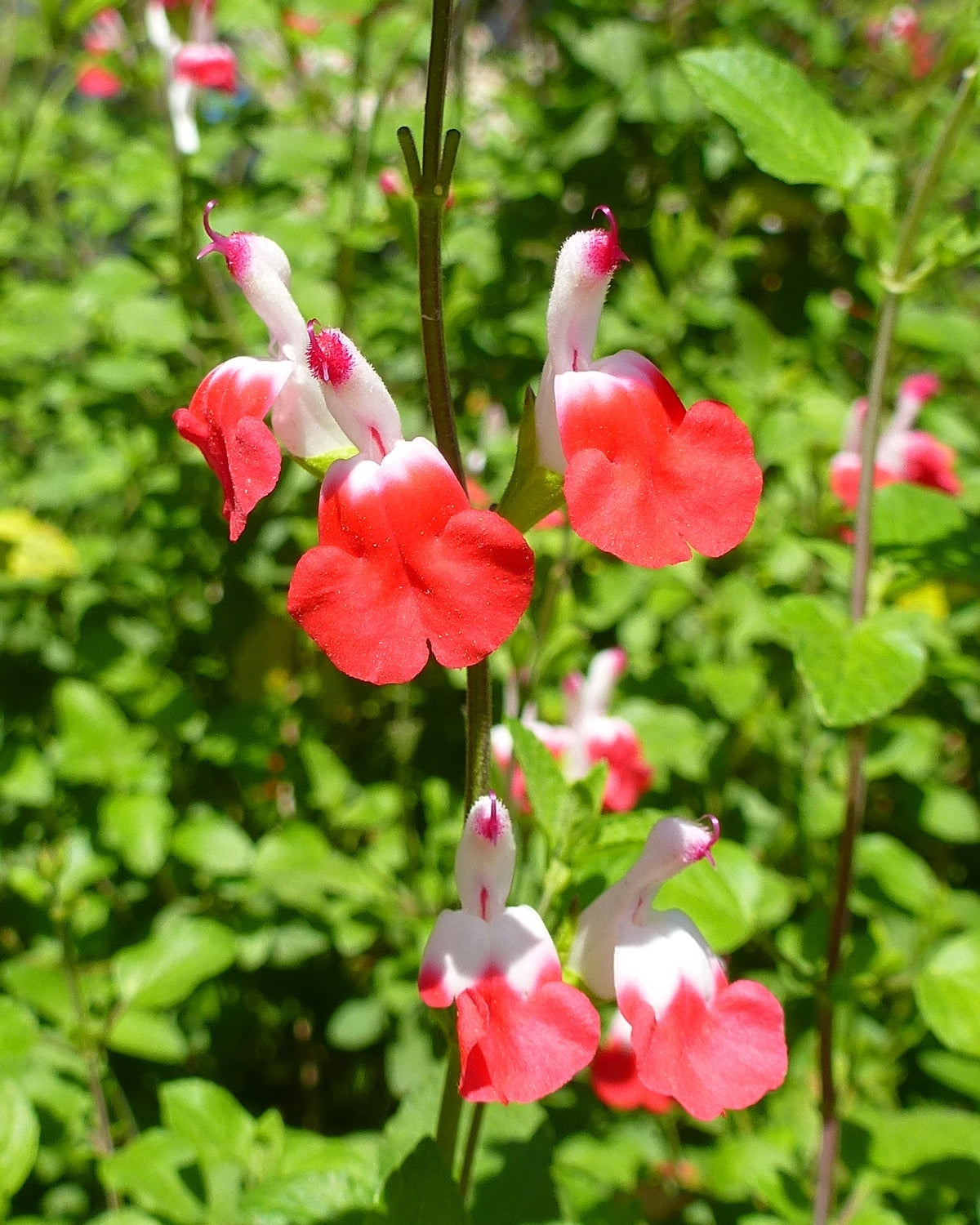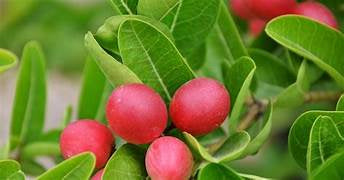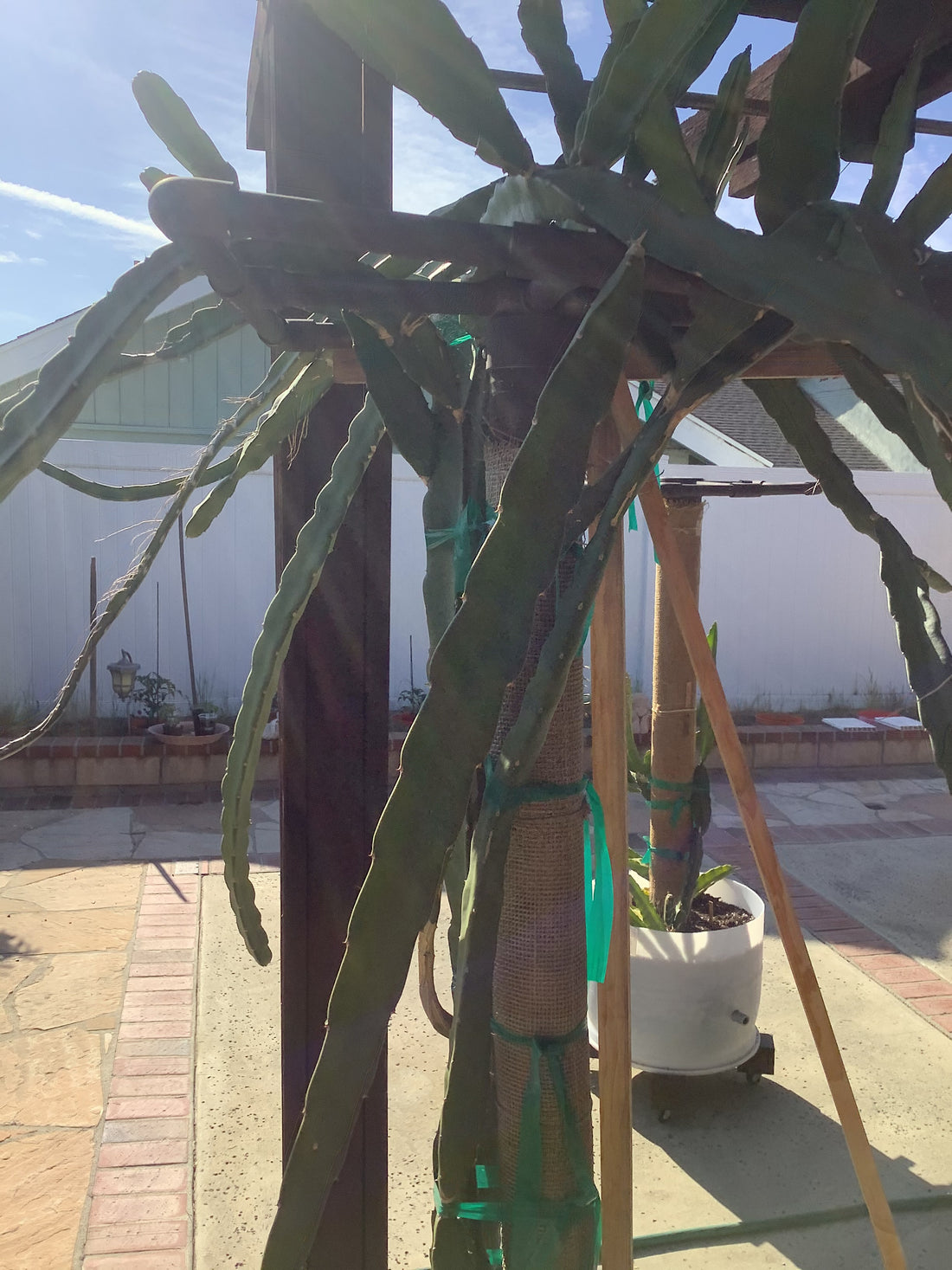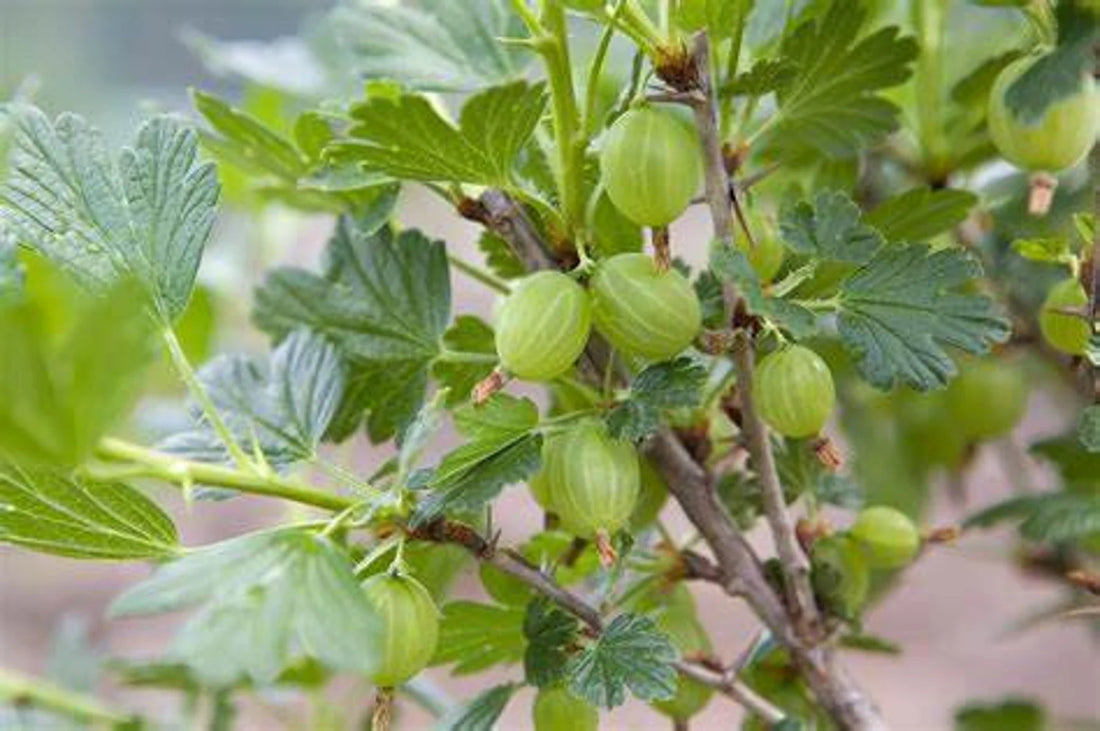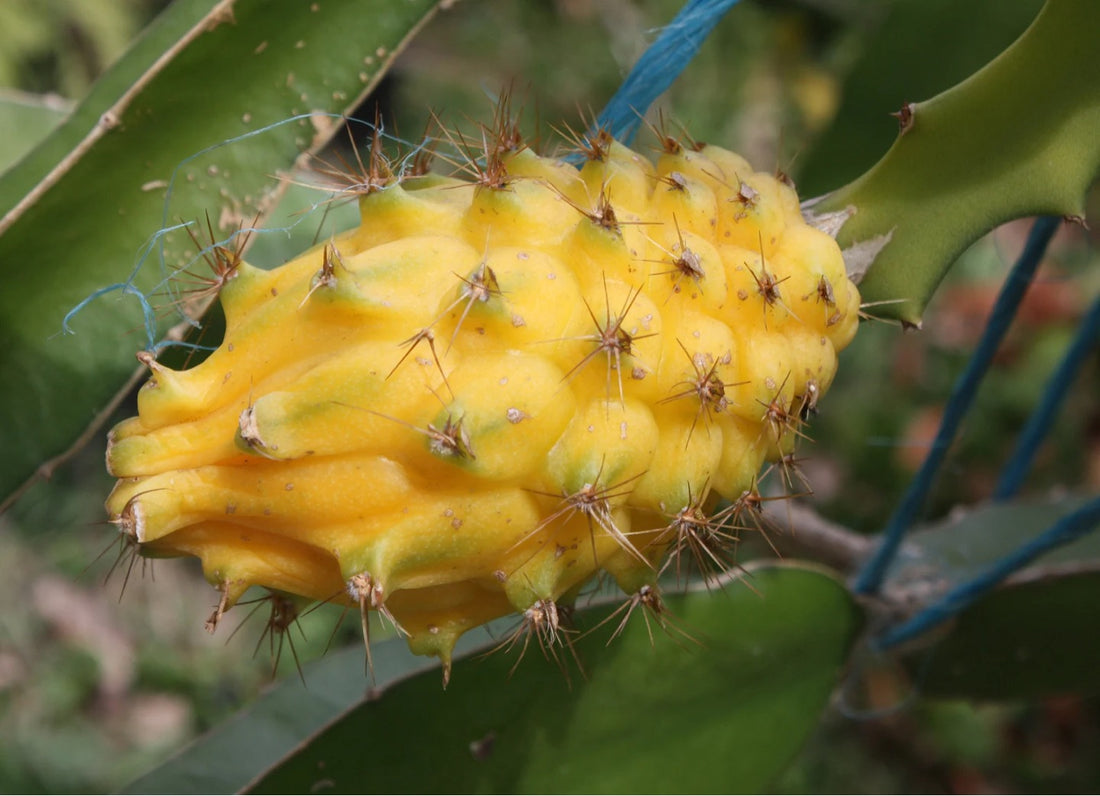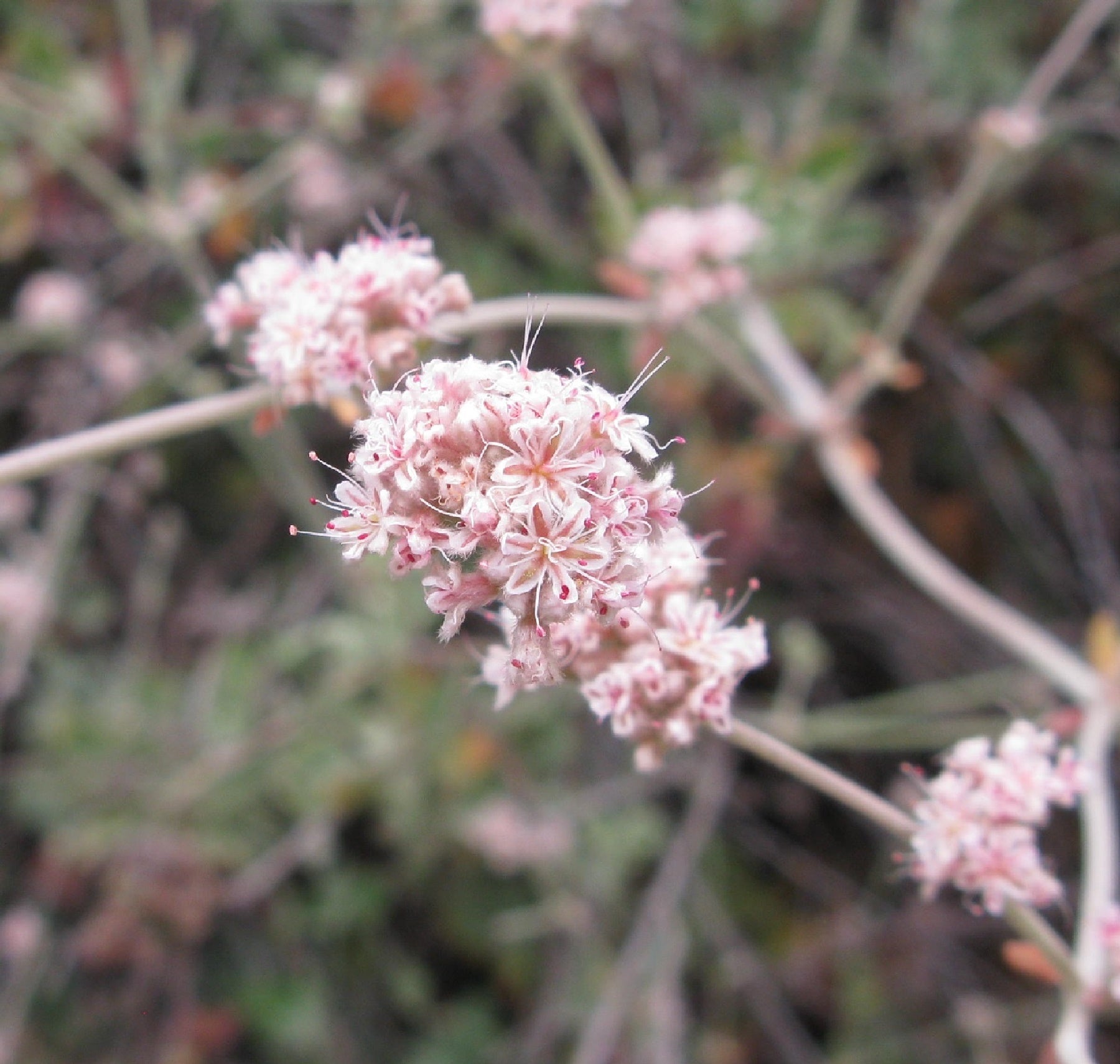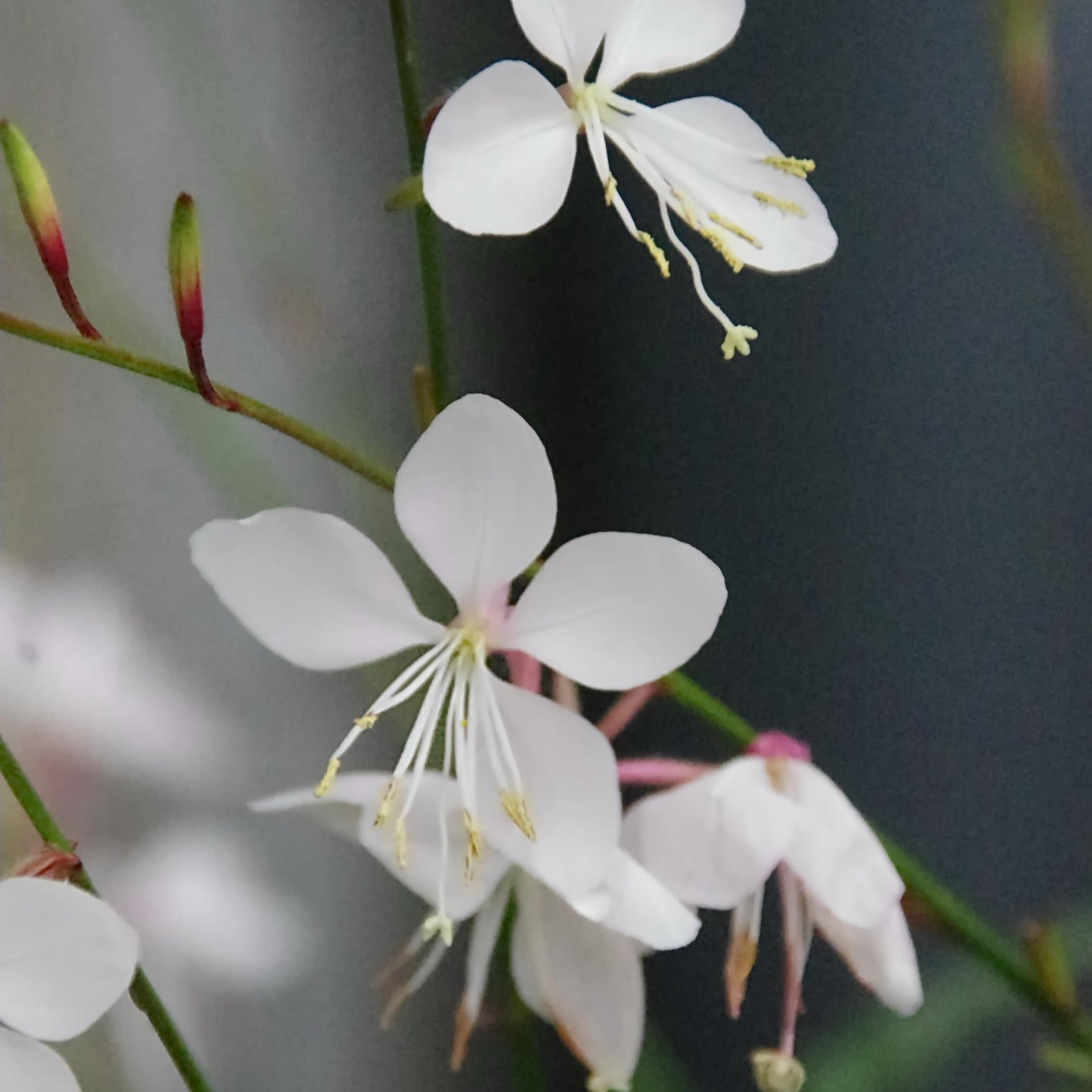Blogs
The Benefits of Miracle Berries
Have you ever wished you could turn sour into sweet, or experience a flavor sensation like no other? Look no further than miracle berries! These small, red fruits have the power to completely transform your taste buds, creating a truly unique and unforgettable eating experience. In this blog post, we will explore what miracle berries are, how they work, and the incredible benefits they offer. What are miracle berries? Miracle berries, scientifically known as Synsepalum dulcificum, are native to West Africa. They have been used for centuries by locals to enhance the taste of food and drinks. These berries contain a special protein called miraculin, which is responsible for their extraordinary effects on our taste buds. How do miracle berries work? When you consume a miracle berry, the miraculin protein binds to the taste receptors on your tongue. This binding alters the way your taste buds perceive flavors, making sour and acidic foods taste incredibly sweet. It's like a magic trick for your taste buds! Benefits of eating miracle berries 1. Enhanced flavor experience: Eating miracle berries can turn ordinary foods into extraordinary delights. Sour fruits like lemons and limes taste like candy, while vinegar becomes a sweet elixir. 2. Healthier alternative to sugar: By using miracle berries, you can reduce your sugar intake without sacrificing sweetness. This is particularly beneficial for individuals with diabetes or those looking to maintain a healthy diet. 3. Experimentation and creativity: Miracle berries open up a world of culinary experimentation. You can host taste-testing parties, create unique flavor combinations, and surprise your friends and family with mind-blowing taste experiences. How to use miracle berries Using miracle berries is simple. Just follow these steps: 1. Obtain fresh or freeze-dried miracle berries. 2. Place a miracle berry on your tongue and let it dissolve for a few moments. 3. Start tasting! Try sour or acidic foods and experience the magic. Where to find miracle berries Miracle berries can be found in select specialty stores or purchased online. Ensure you are buying from a reputable source to guarantee the quality and authenticity of the product. Conclusion Eating miracle berries is a truly transformative experience that allows you to explore the world of flavors in a whole new way. From turning sour into sweet to reducing sugar intake, these little red berries offer a multitude of benefits. So why not give your taste buds an adventure they'll never forget? Try miracle berries today and embark on a flavor journey like no other!
Learn moreEasy Steps to Grow Dragon Fruit
What is Dragon Fruit? Dragon fruit, also known as pitaya, is a tropical fruit that is gaining popularity due to its unique appearance and health benefits. It is native to Central America but is now grown in various parts of the world. The fruit has a vibrant pink or yellow skin with green scales, and its flesh is white or red with tiny black seeds. Why Grow Dragon Fruit on a Trellis? Growing dragon fruit on a trellis has several advantages. Firstly, it saves space in your garden as the plant grows vertically instead of spreading horizontally. Secondly, it allows better air circulation and sunlight exposure, which are crucial for the plant's growth and fruit production. Lastly, a trellis provides support to the climbing stems of the dragon fruit plant, preventing them from bending or breaking under the weight of the fruit. Step 1: Choose the Right Trellis When selecting a trellis for your dragon fruit, opt for a sturdy structure that can withstand the weight of the plant and its fruits. A metal or wooden trellis with a height of at least 6 feet is recommended. Make sure the trellis is securely anchored in the ground to prevent it from toppling over. Step 2: Prepare the Soil Dragon fruit plants thrive in well-draining soil with a pH level between 6 and 7. Before planting, amend the soil with organic matter such as compost or aged manure to improve its fertility and drainage. Remove any weeds or grass from the planting area to minimize competition for nutrients. Step 3: Planting the Dragon Fruit Place the dragon fruit cuttings or seedlings near the base of the trellis, ensuring that each plant has enough space to grow and spread its aerial roots. Gently press the soil around the roots and water thoroughly. It is advisable to plant the dragon fruit during the warmer months when the soil temperature is above 65°F (18°C). Step 4: Provide Adequate Support As the dragon fruit plants grow, guide their stems towards the trellis and secure them using soft ties or plant clips. Avoid using materials that can damage the delicate stems. Regularly check the ties and adjust them as needed to prevent constriction as the plant expands. Step 5: Water and Fertilize Dragon fruit plants require regular watering, especially during dry spells. However, it is essential to avoid overwatering, as excessive moisture can lead to root rot. Apply a balanced fertilizer every two to three months during the growing season to provide the necessary nutrients for healthy growth and fruit development. Step 6: Pruning and Maintenance Prune the dragon fruit plant to remove any dead or diseased branches and to promote better air circulation. Regularly inspect the plant for pests or diseases and take appropriate measures to control them. Additionally, remove any suckers or side shoots that emerge from the base of the plant to maintain a single-stemmed structure. Step 7: Harvesting Dragon Fruit Dragon fruit typically takes around 30 to 50 days to ripen after flowering. The fruit should be harvested when the skin color changes and the scales start to wither. Gently twist the fruit to detach it from the stem. Dragon fruit can be stored in the refrigerator for up to one week. By following these easy steps, you can successfully grow dragon fruit on a trellis in your own backyard. Enjoy the beauty of the plant and the delicious, nutritious fruits it produces!
Learn moreA Guide in Growing a Pineapple Guava Plant
Pineapple guava, also known as Feijoa sellowiana, is one of those plants that gardeners can’t help but adore. It’s a hardy evergreen shrub with silvery green leaves, cheerful red-and-white blossoms, and fruit that tastes like a refreshing mix of pineapple, guava, and mint. Here at Blossomdale Plant Nursery, we’ve watched many gardeners fall in love with it—not only for its flavor, but for how forgiving it is once you know its simple preferences. Where Does Pineapple Guava Originally Come From? Pineapple guava comes from the highlands of southern Brazil, Uruguay, Paraguay, and northern Argentina. It’s long been treasured there for its resilience and bright, tropical flavor. Over time, this adaptable shrub made its way to New Zealand and California in the early 1900s, quickly becoming a garden favorite thanks to its drought tolerance and ornamental charm. Today, it thrives in gardens around the world—from Mediterranean-style yards to small urban orchards—showing that beauty and productivity can go hand in hand, even outside the tropics. [productList] What Soil Type Is Best for Pineapple Guava? Sandy or loamy soil with good drainage supports strong root health. A slightly acidic to neutral pH works well. Dense or heavy soil benefits from compost or coarse sand to keep moisture from lingering around the roots. How Much Sunlight Does a Pineapple Guava Plant Require? Full sun encourages abundant blooms and high fruit production. In very hot regions, light afternoon shade keeps the foliage fresh. Bright conditions support the plant’s natural growth pattern. How Often Should You Water a Pineapple Guava Plant? Young plants need steady moisture while roots establish. Mature plants become water-efficient and perform well with deep watering every one to two weeks, depending on climate and soil type. Consistently well-drained soil prevents root problems. How Do You Propagate Pineapple Guava: Seeds or Cuttings? Seeds grow successfully, but plants from cuttings offer better predictability in flavor and growth habit. Semi-hardwood cuttings taken in late summer root well in a light, well-draining mix. Maintaining steady humidity speeds up rooting. Is Pineapple Guava Cold-Hardy? Established plants tolerate light frost for short periods. Younger plants benefit from extra protection in colder weather. Gardeners in cooler zones often grow pineapple guava in containers to bring indoors during winter cold spells. What Climate Does the Pineapple Guava Plant Need? A warm, temperate climate with gentle winters and consistent summer warmth supports healthy growth. Coastal, Mediterranean, and subtropical climates fit the plant’s natural preferences. Warmth encourages richer fruit flavor and stronger flowering. What Growing Zones Support Healthy Pineapple Guava Growth? Pineapple guava grows best in USDA Zones 8 through 11, where winters are gentle and summers are warm. It loves full sun but won’t mind a bit of afternoon shade, especially in hotter regions. Zone 8 may require winter protection for new plants. Zones 9 to 11 provide ideal conditions that match its native environment. How Big Does a Pineapple Guava Tree Get? Most plants reach 10 to 15 feet in height. Gardeners can shape them into a single-trunk tree or allow natural multi-stem growth. Width often matches height, giving the plant a balanced, rounded form. When and How Do You Harvest Pineapple Guava Fruit? Pineapple guava fruit usually ripens in late fall, around October or November in most regions. The surest sign it’s ready is simple—it falls. Ripe fruit naturally drops from the branches, though you can also gently pick ones that give slightly when pressed. The skin is edible, though many gardeners prefer to scoop out the fragrant, jelly-like center. The fruit keeps for about a week at room temperature and makes wonderful smoothies, jams, and baked treats. How Long Does It Take for a Pineapple Guava Plant to Fruit? Cuttings begin producing fruit in two to three years. Seed-grown plants take longer, often four to five years. Regular sunlight and proper watering help encourage a stronger harvest once the plant reaches maturity. How Do You Prune a Pineapple Guava Plant? Prune at the end of winter by removing dead, damaged, or crossing branches. Keep the center open so air and light reach the inner canopy. After fruiting, do a light shaping trim to maintain structure. Mature plants respond best to selective thinning rather than heavy cutting, and keeping yearly pruning minimal supports consistent flowering and fruiting. What Pests or Diseases Affect Pineapple Guava Plants? Pineapple guava is generally a tough and healthy grower, but like any plant, it has a few occasional visitors. Scale insects and aphids sometimes gather on tender new shoots, and in warmer areas, fruit fly larvae may find fallen fruit tempting. Keeping the plant pruned for good airflow and promptly collecting dropped fruit helps prevent most issues. If pests appear, organic options like neem oil or insecticidal soap work well. Diseases are rare, though poor drainage can lead to root rot—another reason to make sure the soil never stays soggy for long. How Can You Use Pineapple Guava in Low-Maintenance Landscaping? Pineapple guava suits water-wise gardens, Mediterranean landscapes, and coastal designs. Its evergreen foliage stays attractive throughout the year. It works well as a hedge, privacy screen, or specimen shrub and provides fruit with little maintenance. What Are the Best Companion Plants for Pineapple Guava? Since pineapple guava thrives in sunny, well-drained soil, it pairs beautifully with other Mediterranean and subtropical favorites like lavender, rosemary, and lantana. These companions draw pollinators such as bees and hummingbirds, which help boost fruit production. For edible landscapes, consider planting it alongside citrus, pomegranates, or olive trees. They share similar growing conditions and together create a lush, climate-smart garden that looks as good as it tastes.
Learn moreWhite Sage 101: Plant Care and Profile
The White Sage (Salvia apiana) is more than a beautiful, aromatic plant—it embodies heritage, traditional medicine, and ecological resilience. Revered for generations by Indigenous communities of the southwestern United States and northern Baja California, this sacred plant has been used in rituals, healing practices, and as a natural remedy supported by its rich bioactive compounds Growing White Sage at home isn’t just about cultivating a plant. It’s an act of respect, care, and connection—to the land, to tradition, and to the rhythms of nature. Here’s how to do it thoughtfully and responsibly. 1. The Cultural and Ecological Significance of White Sage Before planting, it helps to understand why White Sage (Salvia apiana) holds such profound meaning. This aromatic perennial shrub is native to the coastal sage scrub and chaparral regions of Southern California and northern Baja California, where it has been used for centuries by Indigenous peoples such as the Chumash, Tongva, Cahuilla, and Kumeyaay. Traditionally, its silvery leaves were gathered for ceremonial burning, or “smudging,” to purify spaces, invite spiritual protection, and restore harmony. These practices date back long before European contact and continue to hold cultural and spiritual significance today. Ecologically, white sage is a resilient plant well-suited to dry, sun-soaked landscapes. Its leaf surfaces reflect sunlight, its water-conducting tissues maintain favorable potentials late into the dry season, and it frequently appears on slopes and benches in chaparral and coastal scrub habitats. Its ecological value extends to pollinators and wildlife. The flower structure of white sage is specialized: only larger bees (such as species from the genera Xylocopa and Bombus) are able to trigger its reproductive mechanism and effectively transfer pollen. Its blossoms also attract a variety of native bees, butterflies, and hummingbirds, contributing to biodiversity and pollinator support when planted in a garden setting. By cultivating white sage in your own landscape, you can play a positive role in sustaining its presence. Rather than relying solely on wild populations—which may face pressure from overharvesting, habitat conversion, and fragmentation—you are creating a refuge, a cultivated patch where the plant can flourish and continue to support pollinators. 2. Ideal Growing Zones and Climate Conditions for White Sage White Sage loves warmth and sunshine. It grows best in USDA Zones 7–10, where winters are mild and summers are dry. If you’re unsure which zone you fall under, check Blossomdale’s Growing Zone Tool to plan your setup. This herb thrives in Mediterranean-style climates—hot days, cool nights, and very little humidity. If you live in a cooler area, it can still be grown in pots and moved indoors during the coldest months. 3. Soil Requirements: White Sage Thrives in Sandy, Well-Drained Soil The secret to healthy White Sage starts in the soil. It prefers sandy, rocky, or well-draining soil that mimics its native Southern California desert environment. Heavy or compact soil holds too much water and can cause root rot. If that’s what you have, mix in coarse sand, pumice, or perlite to loosen it up. A slightly alkaline pH (around 6.5 to 7.5) works best. 4. Seed Starting vs. Propagation: Which Method Works Best? You can grow White Sage from seeds or cuttings. Seeds require patience—they can take two to three weeks to germinate and do best in warm conditions. Scatter them lightly over the soil, press gently, and mist regularly until they sprout. If you want faster results, propagation from semi-woody cuttings is a reliable method. Take a healthy stem, let the cut end dry for a few hours, then plant it in a sandy mix. Within weeks, roots will begin to form. Both methods can thrive with a little attention and the right care setup. 5. Watering Techniques: Preventing Overwatering in White Sage Overwatering is the biggest mistake most gardeners make with White Sage. Remember—it’s a drought-tolerant plant. In the wild, it survives long stretches without rain. Water only when the soil is completely dry. During the first few months, keep moisture light but consistent to help the roots establish. Once mature, White Sage prefers deep, infrequent watering. Always err on the side of less water rather than more. 6. Sunlight Needs: White Sage Requires Full Sun Exposure This plant loves light. White Sage needs full sun—at least six to eight hours per day—to stay compact and produce those silvery, aromatic leaves. Without enough sunlight, it can grow leggy and lose its color. If you’re growing indoors or on a shaded patio, place it near a bright window or under a grow light. 7. Pests and Diseases to Watch for When Growing White Sage White Sage is naturally resistant to most pests, but it’s still good to stay alert. Aphids, spider mites, or mealybugs might appear occasionally, especially in warm, dry climates. Rinse them off with a light spray of water or wipe leaves with a mild neem oil solution. Avoid overwatering, since excess moisture invites fungus and root rot. 8. Pruning and Harvesting White Sage for Healthy Growth Pruning keeps White Sage bushy and productive. Once it reaches about a foot tall, pinch back the tips to encourage branching. Remove any dead or woody stems at the end of the growing season. When it’s time to harvest, wait until the plant is mature—usually in its second year. Cut stems gently, leaving enough growth behind so it can recover. Avoid stripping the plant bare. 9. Overwintering and Seasonal Care for White Sage If your winters are mild, White Sage can stay outdoors year-round. In cooler areas, move container plants indoors before frost. Place them in a bright, sunny spot and water sparingly during dormancy. In early spring, trim back old growth and refresh the top layer of soil. This seasonal rhythm keeps the plant healthy and ready to flourish again as the days warm up. 10. Sustainable Harvesting Practices: Respecting the Plant and Its Heritage Perhaps the most important step is this one: harvest with care and intention. White Sage holds deep cultural roots for many Indigenous communities, and its overharvesting in the wild has caused real harm. If you choose to grow and use it, do so respectfully. Take only what you need, give the plant time to regrow, and never gather from wild populations. Consider sharing your harvest with friends or using it for home aromatherapy instead of commercial sale. By growing White Sage responsibly, you’re helping protect a sacred plant and the ecosystems it supports. Growing with Gratitude Cultivating White Sage is a rewarding journey—it teaches patience, respect, and balance. When you grow it with intention, you’re not just adding a beautiful plant to your garden. You’re carrying forward a legacy of care that connects people, land, and tradition. Start with one seed or cutting, nurture it gently, and let it remind you that growth takes time—and that’s exactly what makes it meaningful.
Learn moreGrowing Your Own Pixwell Gooseberry Plant
What is a Pixwell Gooseberry Plant? A Pixwell gooseberry plant is a deciduous shrub that produces small, tart berries. It belongs to the Ribes genus and is native to North America. The plant is known for its thorny branches and green, lobed leaves. How to Plant a Pixwell Gooseberry Plant? 1. Choose a suitable location: Select a spot in your garden that receives full sun or partial shade. Ensure the soil is well-drained and fertile. 2. Prepare the soil: Remove any weeds or grass from the planting area. Loosen the soil and add organic matter, such as compost, to improve its fertility. 3. Dig a hole: Dig a hole that is slightly larger than the root ball of the Pixwell gooseberry plant. 4. Plant the shrub: Place the plant in the hole, making sure the top of the root ball is level with the soil surface. Backfill the hole with soil and gently firm it around the plant. 5. Water thoroughly: After planting, water the shrub deeply to settle the soil and provide moisture to the roots. How to Care for a Pixwell Gooseberry Plant? 1. Watering: Keep the soil consistently moist, especially during dry periods. Avoid overwatering, as it can lead to root rot. 2. Fertilizing: Apply a balanced fertilizer in early spring to promote healthy growth. Follow the manufacturer's instructions for the correct dosage. 3. Pruning: Prune the Pixwell gooseberry plant in late winter or early spring to remove dead or damaged branches. This will improve air circulation and prevent disease. 4. Pest and disease control: Monitor the plant for common pests like aphids and caterpillars. Use organic insecticides or natural remedies to control infestations. Additionally, watch out for diseases like powdery mildew and take appropriate measures to prevent or treat them. When and How to Harvest Pixwell Gooseberries? Pixwell gooseberries are typically ready for harvest in mid to late summer. The berries should be firm and have a pinkish hue when ripe. To harvest, gently twist or cut the berries from the plant, being careful not to damage the branches. What are the Benefits of Growing Pixwell Gooseberry Plants? 1. Nutritional value: Pixwell gooseberries are rich in vitamins, minerals, and antioxidants, making them a healthy addition to your diet. 2. Culinary uses: The tart berries can be used in various culinary preparations, including jams, jellies, pies, and desserts. 3. Landscaping: The Pixwell gooseberry plant's thorny branches and green foliage can add visual interest to your garden or landscape. Conclusion Growing a Pixwell gooseberry plant can be a rewarding experience. By following the proper planting and care techniques, you can enjoy a bountiful harvest of these tart and nutritious berries. Whether you use them in your favorite recipes or simply enjoy them fresh, Pixwell gooseberries are a delightful addition to any garden.
Learn moreYellow Dragon Fruit Benefits
What is Yellow Dragon Fruit? Yellow dragon fruit, also known as pitaya, is a tropical fruit native to Central and South America. It belongs to the cactus family and is known for its vibrant yellow skin and sweet, juicy flesh. This exotic fruit is not only visually appealing but also packed with numerous health benefits. Rich in Antioxidants One of the key reasons to incorporate yellow dragon fruit into your diet is its high antioxidant content. Antioxidants help protect the body against harmful free radicals, which can cause cellular damage and contribute to various diseases. Yellow dragon fruit is particularly rich in betalains, a type of antioxidant known for its anti-inflammatory properties. Boosts Immune System Yellow dragon fruit is an excellent source of vitamin C, which plays a crucial role in supporting a healthy immune system. Consuming this fruit regularly can help strengthen your body's natural defense mechanisms, making you less susceptible to common illnesses like colds and flu. Improves Digestive Health The high fiber content in yellow dragon fruit makes it beneficial for digestive health. Fiber helps promote regular bowel movements, prevents constipation, and supports a healthy gut. Including this fruit in your diet can aid in maintaining a healthy digestive system. Enhances Skin Health Yellow dragon fruit is a beauty secret for many. It contains vitamin C, which is essential for collagen production, a protein that keeps your skin firm and youthful. Additionally, the fruit's antioxidant properties help protect the skin from damage caused by environmental factors, such as pollution and UV rays.
Learn moreDiscover the Wonders of the White Sage Plant
Have you ever heard of the White Sage plant? This remarkable herb, scientifically known as Salvia apiana, has been used for centuries due to its numerous benefits. In this blog post, we will explore the fascinating world of the White Sage plant and uncover its secrets. So, let's dive in and learn more about this incredible plant! What is the White Sage Plant? The White Sage plant is a perennial shrub native to the southwestern United States and northwestern Mexico. It is characterized by its silvery-white leaves and beautiful purple flowers. The plant has a strong, aromatic scent that is often described as earthy and soothing. What are the Benefits of White Sage? White Sage has been traditionally used by Native American tribes for its medicinal and spiritual properties. The plant is believed to have antimicrobial, anti-inflammatory, and antioxidant effects. It is commonly used in smudging rituals to cleanse and purify the air. Furthermore, White Sage is known for its ability to promote relaxation and reduce stress. Burning dried White Sage leaves, also known as smudging, is believed to clear negative energy and create a peaceful environment. How to Grow and Care for White Sage? Growing White Sage is relatively easy, making it a great addition to your garden. Here are some tips to help you get started: Choose a sunny spot: White Sage thrives in full sun, so make sure to plant it in a location that receives at least six hours of direct sunlight per day. Well-draining soil: The plant prefers well-draining soil, as it is susceptible to root rot. If your soil is heavy or clay-like, consider adding sand or perlite to improve drainage. Water sparingly: White Sage is drought-tolerant and does not require frequent watering. Allow the soil to dry out between waterings to prevent overwatering. Prune regularly: To maintain a compact and bushy shape, prune your White Sage plant in early spring. This will also encourage new growth. Experience the Magic of White Sage Salvia apiana Plant One Gallon Size Now that you've learned about the incredible properties of the White Sage plant, why not bring its magic into your own home? At HH Plant Nursery, we offer the White Sage Salvia apiana Plant in a convenient one-gallon size. Our White Sage Salvia apiana Plant One Gallon Size is carefully nurtured to ensure its health and vitality. With its aromatic leaves and stunning flowers, this plant will not only add beauty to your surroundings but also provide you with the benefits of White Sage. Don't miss out on the opportunity to experience the wonders of the White Sage plant. Purchase our White Sage Salvia apiana Plant One Gallon Size today and create a serene and harmonious atmosphere in your home. Click here to buy the White Sage Salvia apiana Plant One Gallon Size now!
Learn morePink Lemonade Blueberry: A Rare Fruit Plant for Home Gardens
Pink Lemonade blueberry stands out the moment it begins to ripen. Its berries shift from pale yellow to soft rose and coral tones, creating a look that feels almost ornamental. Gardeners enjoy its sweet, candy-like flavor and consistent growth habit, which make it a practical addition to small or large home gardens. Pink Lemonade Blueberry shrub has become a favorite at Blossomdale Plant Nursery because of how this variety bridges the worlds of ornamental and edible gardening. It’s proof that something practical can also be truly beautiful. What Is a Pink Lemonade Blueberry? Pink Lemonade is a specialty hybrid created from Northern Highbush and Rabbiteye genetics. This combination brings cold tolerance, steady vigor, and strong adaptability. Its unique berry color comes from its breeding and not from artificial modification, which contributes to the variety’s appeal among gardeners who enjoy growing uncommon fruit plants. Do Pink Lemonade Blueberries Really Taste Like Lemonade? The name refers to the fruit’s color rather than its flavor. Pink Lemonade berries taste sweet with a light, honeyed finish. They do not have citrus or lemon-like notes, and the flavor leans milder and less tart than many traditional blueberries. What USDA Zones Are Best for Pink Lemonade Blueberries? Pink Lemonade Blueberries thrive in USDA Zones 4 through 8. This range means the shrub can tolerate cold winter temperatures while still producing fruit reliably in areas with moderate warmth. In cooler zones, the plant benefits from the full sun exposure needed to encourage flowering and fruit set. In the warmer end of its range, especially in Zones 7 and 8, providing some afternoon shade can help prevent heat stress and leaf scorch, keeping the berries flavorful and the foliage healthy. [productList] How Big Do Pink Lemonade Blueberry Bushes Get? This variety matures at about three to four feet tall and wide, which makes it suitable for compact gardens, mixed borders, and container plantings. Its size helps gardeners incorporate it into landscapes without crowding surrounding plants. How Much Sunlight Does a Pink Lemonade Blueberry Plant Require? Full sun supports the plant’s best performance. Aim for six to eight hours of direct sunlight to encourage dense blooms and rich berry color. Cooler climates benefit from full exposure, while warmer regions can allow very light afternoon shade. Soil Acidity and Fertility: Why Pink Lemonade Blueberries Need Specific Conditions Blueberries are picky about one thing: soil. They need acidic, nutrient-rich, well-draining soil with a pH between 4.5 and 5.5. Anything higher, and the roots can’t absorb nutrients properly. Before planting, mix in peat moss, composted pine bark, or leaf mold to lower pH naturally. Avoid heavy clay, which traps moisture and suffocates roots. If you’re planting in pots, use a potting mix formulated for acid-loving plants, the same kind suitable for azaleas and camellias. Keeping your soil balanced is the secret to rich growth and vibrant fruit color. How Often Should You Water Pink Lemonade Blueberries? Provide consistent moisture without waterlogging the roots. Deep watering once or twice weekly is usually enough, depending on temperature and soil type. Container-grown plants dry faster and need closer monitoring. Mulch helps stabilize soil moisture and keeps roots cool. What Fertilizers Work Best for Pink Lemonade Blueberry Plants? Use fertilizers formulated for acid-loving plants. Controlled-release nitrogen sources work well because they support steady growth without forcing excess foliage at the expense of fruit. Apply in early spring and again in late spring if needed. Blueberry Varieties Guide: From Jewel to Pink Lemonade Blueberries come in many forms, and understanding the differences helps you grow the best kind for your climate. Southern Highbush varieties like Jewel and Misty thrive in warmer regions with short winters. They produce early and handle humidity well. Northern Highbush blueberries, such as Bluecrop and Patriot, prefer cooler climates and longer chill periods. Then there are specialty types like Pink Lemonade—a hybrid that combines the cold tolerance of Northern Highbush with the adaptability of Rabbiteye blueberries. This blend gives it both resilience and beauty. If you already grow Jewel, adding Pink Lemonade creates a diverse, staggered harvest season—and a striking contrast in the garden. Are Pink Lemonade Blueberries Self-Pollinating? Pink Lemonade is self-fruitful, though yields increase when pollinators are active. Its soft pink spring flowers attract bees naturally. Companion plants such as Jerusalem Sage, lavender, or Pineapple Guava help maintain regular pollinator activity around the shrubs, strengthening fruit set. What Pests or Diseases Affect Pink Lemonade Blueberries? Blueberries generally remain healthy when grown in acidic, well-drained soil. Birds are the most common issue as fruit begins to ripen. Poor drainage can cause root decline, and humid conditions occasionally encourage fungal problems. Adequate spacing, airflow, and careful watering help prevent most concerns. How Do You Prune a Pink Lemonade Blueberry Bush? Prune in late winter while the plant is dormant. Remove dead or weak stems, then shape the shrub by encouraging several strong canes. Opening the center to light improves airflow and steady berry production. Light annual pruning maintains plant vigor. Container and Small-Space Gardening with Pink Lemonade Blueberries Pink Lemonade adapts easily to containers at least 18 inches wide. Growing in pots offers full control over soil acidity and drainage. Containers can be moved to capture more sun, avoid strong winds, or protect the plant from late frost. Its compact size makes it a strong option for patios, balconies, and decorative edible groupings with herbs or foliage plants. When Do Pink Lemonade Blueberries Produce Fruit? Pink Lemonade ripens mid to late season. Flowers appear in spring, followed by berries that gradually shift from yellow to pink as summer progresses. Harvest often continues into early fall, extending the picking window beyond many traditional varieties. How Long Does It Take for a Pink Lemonade Blueberry Bush to Fruit? Most shrubs begin producing small harvests in their second or third year. As the plant matures, yields increase steadily, and established bushes deliver more consistent crops. Are Pink Lemonade Blueberries Genetically Modified? No. Pink Lemonade blueberries were developed through traditional breeding practices and are not genetically modified. Nutritional and Culinary Benefits of Pink Lemonade Blueberries Beyond their garden appeal, Pink Lemonade Blueberries are a treat for your table. They’re rich in vitamin C, antioxidants, and fiber, just like traditional blueberries, but have a unique, honeyed flavor. Their vibrant color makes them perfect for fresh desserts, salads, or homemade jams. You can also freeze them for smoothies or bake them into muffins for a pop of pink sweetness. If you love edible gardening, growing specialty varieties like Pink Lemonade adds a creative, flavorful touch to your harvest. Why Pink Lemonade Blueberry Deserves Space in Your Garden Pink Lemonade balances ornamental appeal, steady yields, and compact growth. It adapts to containers, supports pollinators, and fits neatly into home landscapes where beauty and practicality meet. For gardeners seeking a specialty fruit plant that performs consistently and stands out visually, this variety brings strong value to modern home gardens.
Learn moreGoji Berry Growing Guide: How to Grow, Care for, and Harvest Your Own Superfruit
Growing your own goji berries (Lycium barbarum) is one of the most rewarding things you can do as a home gardener. Known as the “longevity fruit” in traditional Chinese medicine, goji berries are packed with antioxidants, vitamin C, and amino acids, making them both delicious and highly nutritious. Goji grows well in warm, sunny spots and adapts to many soil types, making it ideal for home gardens, raised beds, and even small urban spaces. What Are Goji Berries? Goji berries are small, bright red-orange fruits from the Lycium barbarum shrub, native to Asia. They have been cultivated for centuries for their nutritional and medicinal properties. Fresh berries are sweet-tart and juicy, while dried berries are chewy with a concentrated flavor. Beyond being edible, goji berries are visually striking, making them popular in ornamental gardens and edible landscapes. Their soft gray-green foliage and delicate flowers provide visual interest even when the plant is not fruiting. Are Goji Berries Easy to Grow? Goji berries are beginner-friendly. They are hardy, tolerate moderate drought, and resist many pests naturally. While pruning and basic care improve fruit production and plant shape, they generally require minimal maintenance, making them suitable for both novice and experienced gardeners. Their adaptability also makes them a good choice for container planting or small urban spaces. Ho Do You Grow Goji Berry Plants? Goji berry plants thrive in full sun, requiring at least six to eight hours of direct light each day. While they can tolerate partial shade, too little sunlight may reduce fruit yield and leaf density. Choosing a sunny, sheltered spot also protects the plant from strong winds and supports robust growth. These plants prefer well-draining soil, such as sandy or loamy types with moderate fertility. Heavy clay or waterlogged areas can harm the roots, so ensuring proper drainage is essential. A light layer of compost can boost nutrients without overfeeding the plant. Spacing is important for airflow and growth, whether planting in the ground or using containers, which should be at least five gallons with drainage holes. Water consistently during the first year to help roots establish, letting the soil dry slightly between watering. A balanced organic fertilizer in early spring and mid-season promotes flowering and abundant berry production. Regular pruning improves airflow, reduces the risk of disease, and encourages new growth. Goji plants can be trained as compact bushes, hedges, or espaliered against fences, offering both ornamental beauty and productive fruit. With proper care, they provide lush foliage, vibrant red berries, and a rewarding addition to any garden. [productList] What Climate Do Goji Berries Need? Goji berries grow best in USDA zones 5–9. They prefer warm, sunny climates with moderate rainfall. They can tolerate light frost but may need protection in colder regions. In subtropical areas, careful management of humidity and soil drainage is essential to prevent fungal diseases and ensure robust berry production. Well-chosen conditions promote both healthy foliage and abundant fruiting. How Much Sunlight Does a Goji Berry Plant Need? These plants thrive in full sun, ideally receiving six to eight hours of direct sunlight each day. Partial shade is tolerated, but shaded plants may produce fewer flowers and smaller berries. Sufficient sunlight encourages compact growth, healthier foliage, and maximum berry production. For gardeners in less sunny locations, positioning the plant near a reflective surface or using a raised bed can help increase light exposure. Container and Small-Space Gardening You don’t need a large yard to grow goji berries. They thrive in containers and raised beds, making them perfect for balconies, patios, or urban gardens. Use a large pot, at least five gallons in size, with well-draining soil. Place it in a sunny location, water consistently but lightly, and prune regularly to maintain a compact, productive shape. Container gardening allows gardeners in limited spaces to enjoy homegrown berries without sacrificing yield or plant health. Medicinal and Herbal Plant Traditions Goji berries have a long history in traditional Chinese medicine, where they have been used to support energy, eye health, and immunity. They are often dried and steeped in teas, soups, or herbal tonics, which allows their nutrients to infuse liquids effectively. By planting goji berries in your garden, you connect to centuries of herbal tradition and create a functional garden space. They pair well with herbs like sage or pineapple guava, which can enhance both the aesthetic and wellness qualities of your garden. Are Goji Berries Safe to Eat Raw? Yes, goji berries are safe to eat raw. Fresh berries are mildly sweet and can be eaten straight from the bush. For longer storage, they can also be dried or frozen. However, individuals taking blood-thinning medications or those with certain allergies should consult a healthcare professional before consuming large amounts. Enjoying them in moderation ensures you get their full nutritional benefits safely. How Do You Know When Goji Berries Are Ripe? Goji berries are ready for harvest when they turn a bright red-orange and feel slightly soft to the touch. Gently pluck ripe berries, leaving unripe ones to continue developing. Correct harvest timing ensures maximum flavor, texture, and nutrient content. Overripe berries may fall off or lose some sweetness, so frequent checking during peak season is recommended. What Are the Health Benefits of Goji Berries? These berries are packed with antioxidants, carotenoids, vitamin C, and amino acids. Eating goji berries may support immune function, promote healthy vision, increase energy, and protect cells from oxidative stress. Fresh berries, dried snacks, and teas all deliver these benefits. Homegrown berries often retain more nutrients and superior flavor compared to commercial varieties, making them a particularly valuable addition to a home garden. Harvesting, Preserving, and Using Homegrown Goji Berries Goji berries are ready to harvest when their skin turns a vivid red-orange and they feel slightly soft. Regularly checking the plant during late summer and early fall prevents overripe berries from falling and reduces waste. Once harvested, fresh berries can be eaten immediately, offering a naturally sweet-tart flavor far superior to store-bought options. For longer storage, drying them in a dehydrator or oven preserves nutrients for months while concentrating their flavor. Freezing is another option that maintains both texture and taste for smoothies or baking. In the kitchen, goji berries are highly versatile. They can be steeped in teas, blended into smoothies, added to granola or salads, baked into muffins or breads, or simmered into jams, sauces, and broths. Pest and Disease Management for Goji Plants Although hardy, goji plants can attract aphids, spider mites, or powdery mildew if conditions are too humid or airflow is poor. Ensure proper spacing, avoid overwatering, and prune annually to maintain an open center. Applying neem oil or insecticidal soap can help control pests naturally. With basic care, goji berries remain productive, healthy, and aesthetically pleasing for many years. Final Thoughts Growing goji berries at home combines beauty, nutrition, and wellness in one plant. Hardy, ornamental, and nutritionally valuable, these shrubs support pollinators, enrich your garden ecosystem, and provide delicious fruits that connect you to centuries of herbal tradition. At Blossomdale Plant Nursery, we believe every garden can be practical, nourishing, and vibrant. Start with a goji berry plant and transform your space into a sanctuary of health, abundance, and natural beauty.
Learn more





